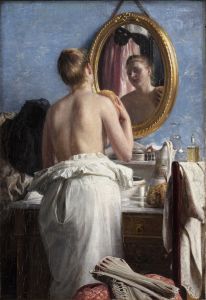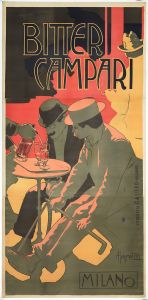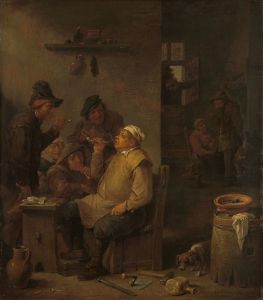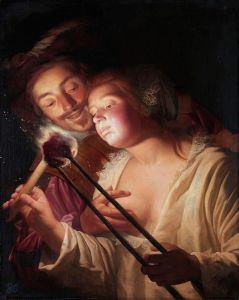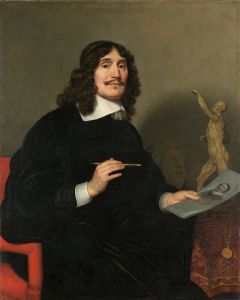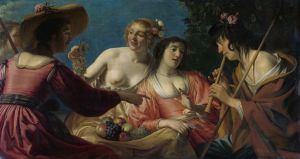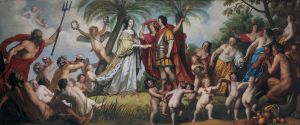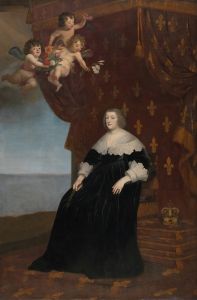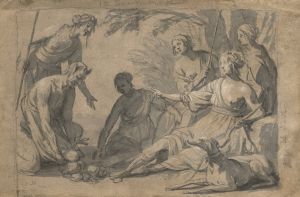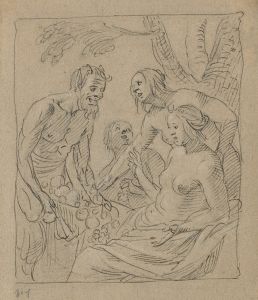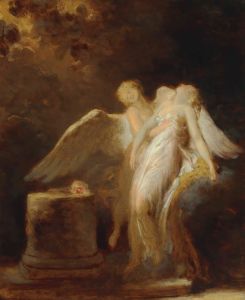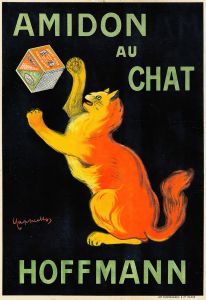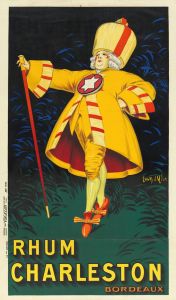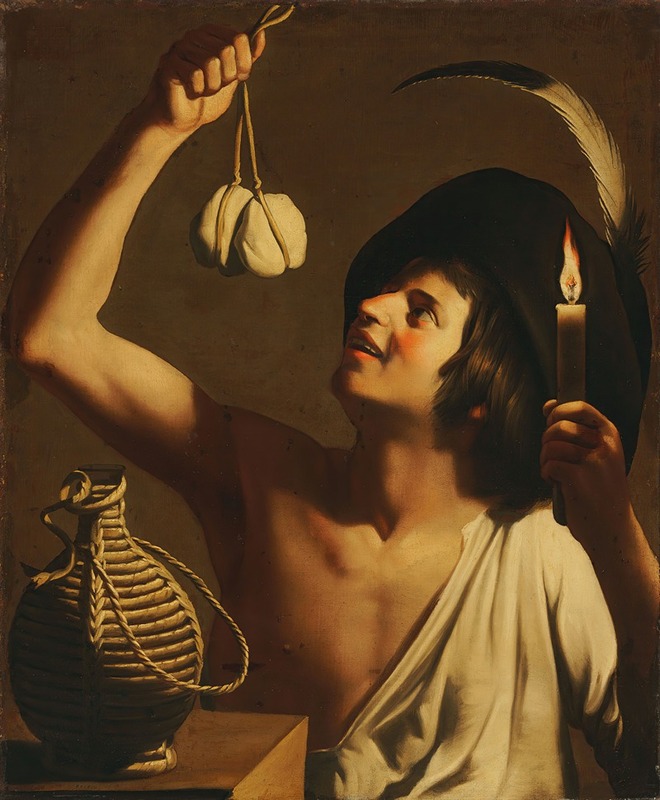
A young man holding a burning candle and a scamorza cheese, a fiasco bottle beside him
A hand-painted replica of Gerard van Honthorst’s masterpiece A young man holding a burning candle and a scamorza cheese, a fiasco bottle beside him, meticulously crafted by professional artists to capture the true essence of the original. Each piece is created with museum-quality canvas and rare mineral pigments, carefully painted by experienced artists with delicate brushstrokes and rich, layered colors to perfectly recreate the texture of the original artwork. Unlike machine-printed reproductions, this hand-painted version brings the painting to life, infused with the artist’s emotions and skill in every stroke. Whether for personal collection or home decoration, it instantly elevates the artistic atmosphere of any space.
Gerard van Honthorst, a prominent Dutch Golden Age painter, is known for his mastery of chiaroscuro and his ability to depict scenes illuminated by artificial light. One of his works, A Young Man Holding a Burning Candle and a Scamorza Cheese, a Fiasco Bottle Beside Him, exemplifies his skill in creating dramatic contrasts between light and shadow. This painting, like many of Honthorst's works, reflects the influence of Caravaggio, whose style Honthorst encountered during his time in Italy.
The artwork portrays a young man holding a burning candle, which serves as the primary light source in the composition. The candlelight illuminates the young man's face and the objects around him, including a scamorza cheese and a traditional Italian fiasco bottle, which is a rounded wine bottle encased in a straw covering. The careful rendering of light and texture demonstrates Honthorst's technical expertise and his ability to create a sense of intimacy and immediacy in his paintings.
Honthorst's use of candlelight as a central element in his compositions earned him the nickname "Gherardo delle Notti" (Gerard of the Nights) during his time in Italy. This painting is a fine example of his nocturnal scenes, which often feature figures engaged in everyday activities, illuminated by a single light source. The choice of objects, such as the scamorza cheese and the fiasco bottle, may reflect the artist's familiarity with Italian culture and his interest in incorporating elements of still life into his genre scenes.
The exact date of this painting is not definitively known, but it is likely to have been created during Honthorst's mature period, after his return to the Netherlands in 1620. During this time, he continued to produce works that showcased his mastery of light and shadow, while also adapting his style to suit the tastes of his Dutch patrons.
As with many of Honthorst's works, this painting invites viewers to appreciate the interplay of light and shadow, as well as the artist's attention to detail and his ability to capture the textures and materials of the objects depicted. It is a testament to Honthorst's enduring legacy as one of the leading figures of the Dutch Golden Age and a master of chiaroscuro.





